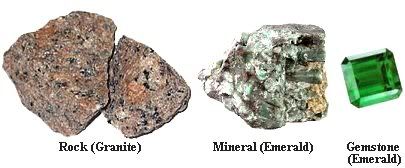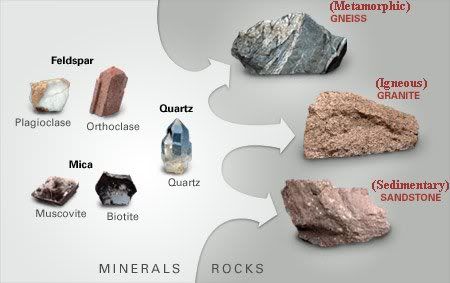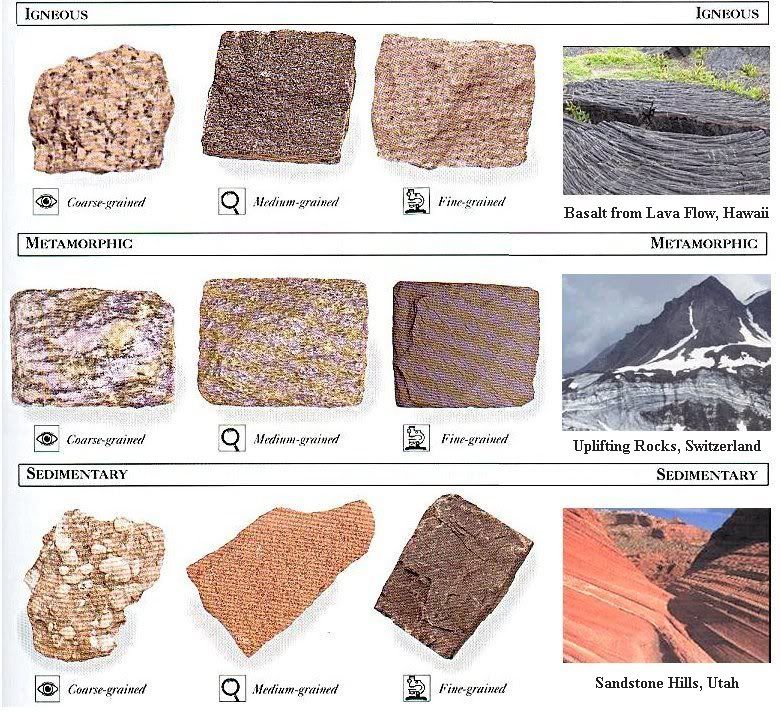ROCKS ORIGIN
In the beginning of the universe, there were no minerals and rocks (aggregate of minerals). It is through the cycles of condensation, melting, dissolving (in liquid), and precipitation that the individual atoms come together to form small crystals and then minerals. The processes work because different substance condensate or precipitate at different temperature, but they do not cleanly segregate one type of mineral from the others. That's why it is so valuable to have mineral of relatively pure compound weighed a few carat (called gemstone, 1 carat = 0.2 gm
EVOULTION OF MINERALS
Rocks are aggregates of minerals - usually several, but sometimes only one or two. Minerals are either free, uncombined native elements (such as gold, silver, and copper), or elemental compounds (such as silicates - metallic elements combine with the Si-O tetrahedral radical). Gemstones are minerals suitable for use in jewelry after cutting and polishing.

Since the Earth's crust composed mainly of Oxygen (46.6%) and Silicon (27.7%) for a total of 75%, the predominant compositions in minerals and thus in rocks are compounds such as quartz (SiO2), feldspars
(XAl1-2Si3-2O8 where X can be either the elements Na, K, or Ca), and Mica (...Si3O10...) (see Figure 09-06m). There are three types of rocks according to the formation process (see Figure
 Type ,Formation, Characteristic, Composition ,Examples
Igneous
Type ,Formation, Characteristic, Composition ,Examples
Igneous
Solidified from molten magma either at the Earth's surface (extrusive) or underneath (intrusive).
The crystals can be very large (via slow cooling), and mostly have random distribution
Basalt, Granite
Metamorphic
Created when existing rock is chemically or physically modified by intense heat or pressure, e.g., in collision of crustal plates
Have either wavy foliation (layer) or more random arrangement
Gneiss, Schist
Sedimentary
Formed from erosion, transportation and subsequent deposition of pre-existing rocks or other kinds of sediments
May occur in layers, grains may be poorly held together
Shale, Sandstone
